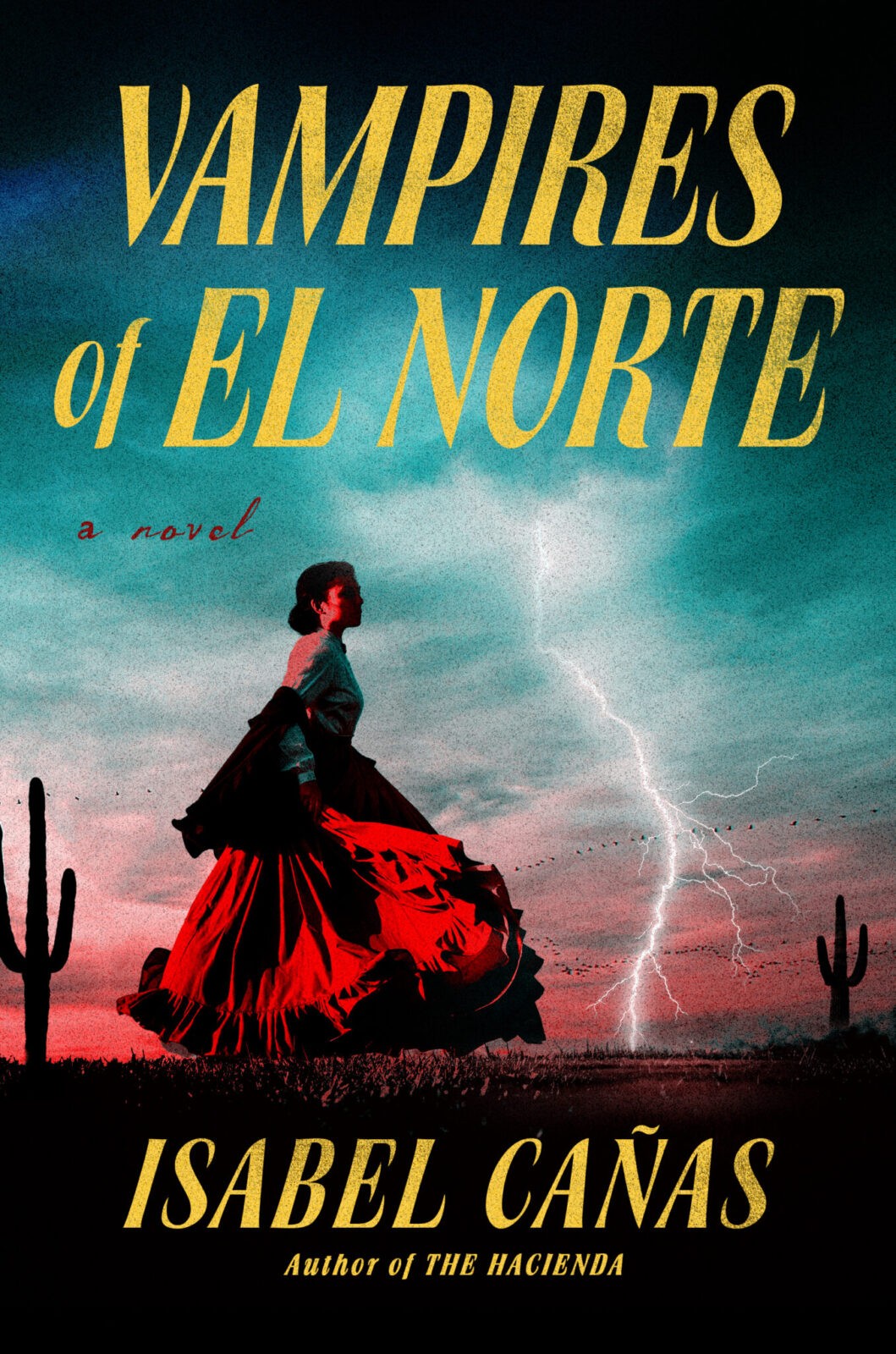Review: Vampires of El Norte by Isabel Cañas
Category:
Rating:

Introduction:
As the daughter of a rancher in 1840s Mexico, Nena knows a thing or two about monsters—her home has long been threatened by tensions with Anglo settlers from the north. But something more sinister lurks near the ranch at night, something that drains men of their blood and leaves them for dead.
Something that once attacked Nena nine years ago.
Believing Nena dead, Néstor has been on the run from his grief ever since, moving from ranch to ranch working as a vaquero. But no amount of drink can dispel the night terrors of sharp teeth; no woman can erase his childhood sweetheart from his mind.
When the United States attacks Mexico in 1846, the two are brought abruptly together on the road to war: Nena as a curandera, a healer striving to prove her worth to her father so that he does not marry her off to a stranger, and Néstor as a member of the auxiliary cavalry of ranchers and vaqueros. But the shock of their reunion—and Nena’s rage at Néstor for seemingly abandoning her long ago—is quickly overshadowed by the appearance of a nightmare made flesh.
And unless Nena and Néstor work through their past and face the future together, neither will survive to see the dawn.
Review:
In this exquisitely crafted work of magical realism-historical fiction, Vampires of El Norte, Isabel Canas skillfully delves into the lives of Mexican ranchers residing along the border of Mexico and Texas during the 1840s, affected by the Mexican American war during that time. Through her adept storytelling, she intricately weaves together a narrative that unfolds like an intricate tapestry, while also meticulously constructing a vivid and immersive world. As I perused Isabel’s author’s note, I was genuinely struck by the extensive dedication she invested in researching and shaping this book, a commitment that undeniably shines through its pages. A huge thank you to the two audiobook narrators who truly brought this story to life.
The world building within Vampires of El Norte is top notch, without a doubt. Isabel adeptly weaves together elements of patriarchy, class divisions, societal hierarchies, prejudices, and racial tensions prevalent in historical Mexico, while infusing a hint of both horror and romance, resulting in a masterful composition. I found immense pleasure in the unique perspective on vampires presented in this work, which draws deeply from the tapestry of Mexican folklore. It offers a refreshing departure from the common portrayal of vampires in American culture as excessively dominant, flawlessly attractive, and invulnerable creatures of immortality.
Entering into this book with an initial expectation of experiencing pure horror, I discovered that while the horror component, embodied by the vampires, certainly played a role, the narrative primarily centered around the romantic dimension. The elements of horror, though present, seemed to take a secondary position within the storytelling. As the story reached its conclusion, I found myself uncertain about whether the vampires truly posed a substantial threat within the narrative because the level of danger they represented seemed ambiguous at the end.
While I was genuinely intrigued by the plotline, I found it somewhat challenging to form a strong emotional bond with either Nena or Nestor. Both characters seemed to lack a certain degree of complexity and profoundness that I typically anticipate from central protagonists. Although the romantic aspect of their relationship wasn’t without merit, I found myself somewhat skeptical about the depth of Nestor’s intense connection to Nena. His profound attachment, developed during his teenage years away from the ranch, came across as more of an obsession than a genuine love. Moreover, Nena’s priorities seemed centered around validating herself to her father and asserting her identity as a woman, causing her affection for Nestor to feel somewhat lukewarm and less compelling.
To be entirely candid, my continued engagement with the book stemmed primarily from its intricately constructed world and the vivid backdrop it provided. I didn’t particularly care for its characters or the ‘slow burning’ romance and all the drama that came along with it.
Furthermore, I experienced a profound sense of disappointment with the concluding chapters of the book. I struggled to comprehend the swift acceptance displayed by Nena’s father and her family – individuals who had been resolute in their determination to dismantle Nena’s relationship with Nestor due to class differences throughout the book. The ease with which they embraced Nena’s decision to wed Nestor left me puzzled and dissatisfied. As I previously noted, I was uncertain as to whether the vampires truly posed a legitimate threat to their society by the story’s conclusion. The degree of menace they represented remained unclear and unresolved.
Although I did derive enjoyment from my reading experience of Vampires of El Norte, I wouldn’t go so far as to say that I was completely enamored by it. Nonetheless, I acknowledge that it stands as a commendable work with well-maintained pacing, immersive world-building, incorporation of Mexican folklore, and a solid narrative.
Book Cover:


